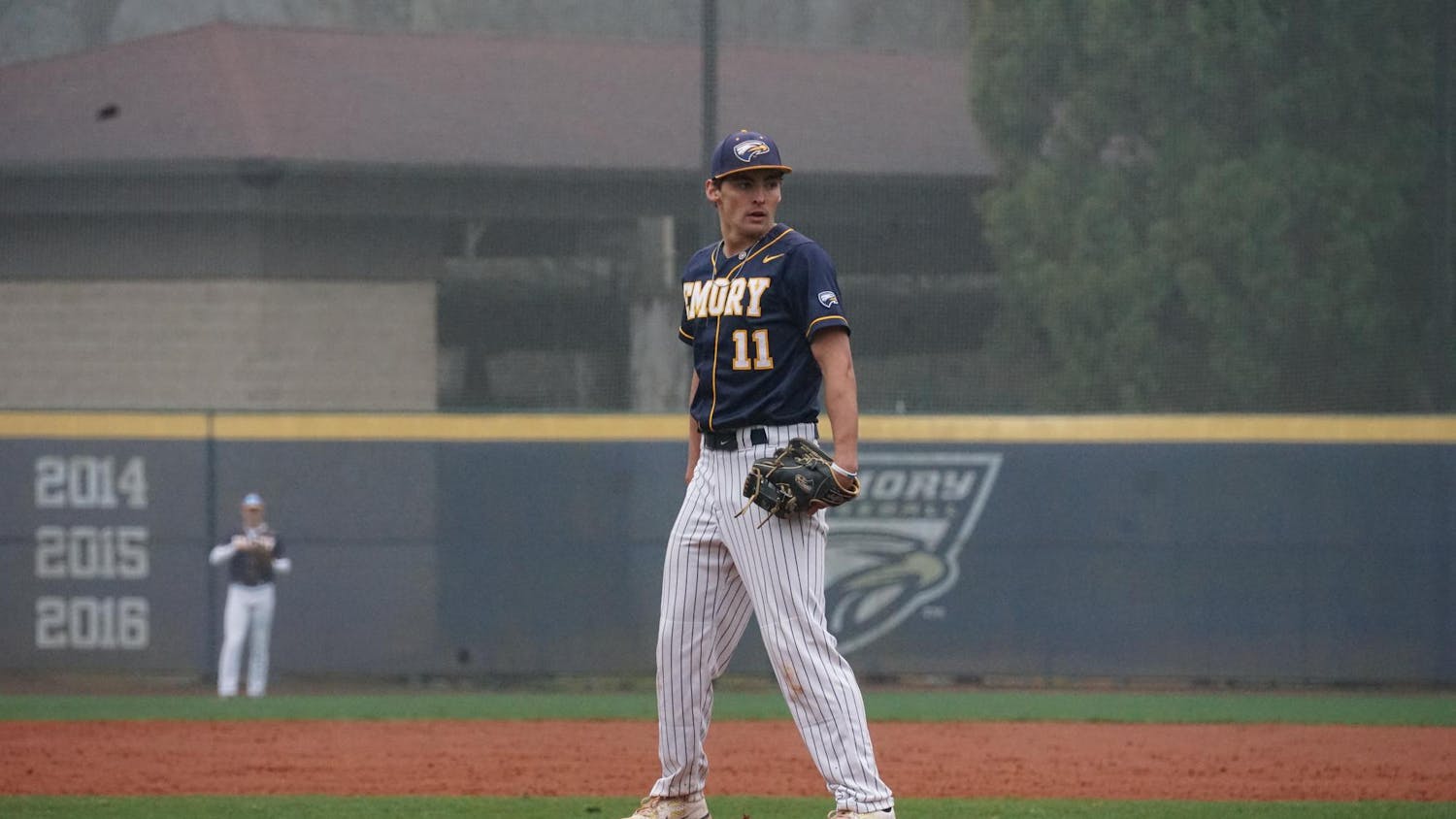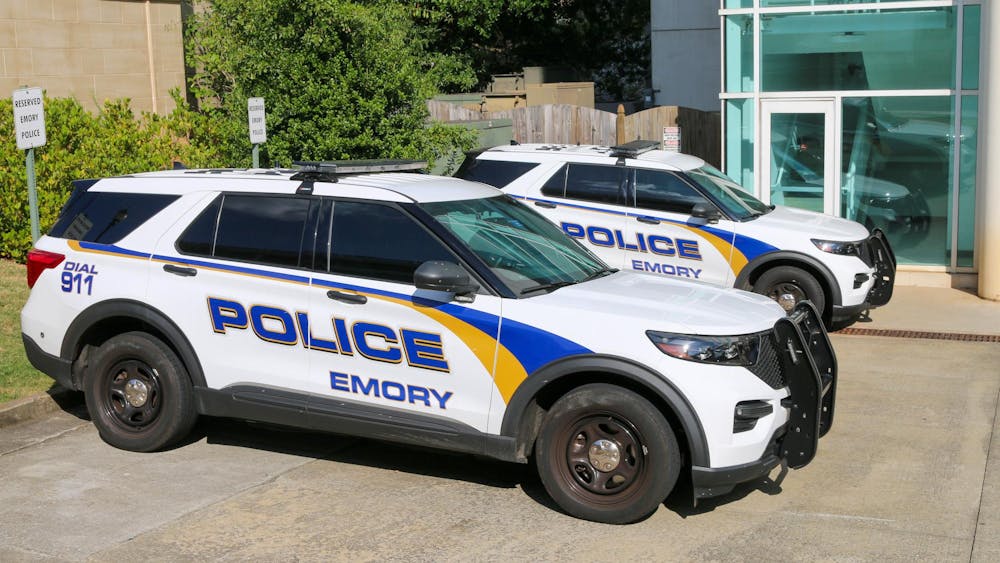
In 2020, the organization Art on the Atlanta Beltline presented the newest addition to its expansive, outdoor art gallery: “Itti’ kapochcha to’li’,” “little brother of war” in Chickasaw, or also known as stickball. A game pivotal to the traditions of many Indigenous Southeast nations, stickball’s literal name, “little brother of war,” is so called because the event was meant to act as a less dangerous alternative to war. Sculpted by Chickasaw and Choctaw artist Addison Karl, this piece depicts two crossed iron Toli sticks, used to pick up and launch the ball, and celebrates the rich, yet rarely discussed, history of stickball. This sculpture, along with the work of Karl, led to the first stickball matches in Atlanta in over 200 years.
On Oct. 15, Karl, Art on the Atlanta Beltline and Emory University organized the Southeast Woodlands Stickball Summit, a collection of stickball exhibition games, at the Historic Fourth Ward Activity Park. The event was run by members from the Chickasaw, Choctaw and Cherokee Nations, and taught audiences about the history of the game and the differing styles between each nation. Miranda Kyle, the Arts and Program Manager for the Atlanta Beltline, noted the importance of these exhibition games for Indigenous history.
“We had been talking about how do we build more momentum around a reclamation of indigenous identity in Atlanta,” Kyle said. “[Atlanta] doesn’t do a good job telling its Indigenous history and its Indigenous presence.”
Since the Stickball Summit was taking place on Muscogee land, members of the Muscogee Nation conducted the opening ceremony. Pearl Thomas, Merle Berryhill and Monte Randall led songs and prayers to prepare for the upcoming matches.
The first exhibition game of the afternoon was based around the Southeastern style of the game, most closely associated with how members of the Chickasaw Nation have played stickball. There are three categories of stickball: social stickball, game stickball and ceremonial stickball, which was not presented during the games, as it is a more private event. Southeastern style falls under social stickball.
In the center of the field is a tall, wooden pole with a spinning red, wooden fish on the top (people are free to replace the fish with other objects, but most Southeast style games have either a fish or a buffalo skull on top). The goal of the game is to launch the ball and hit either the top of the pole or the fish. You get one point from hitting the pole and three from hitting the fish. The teams were broken up into men versus women, with specific rules in place for each team. While the men were required to pick up the ball and throw it with their Toli sticks, the women were free to use their hands. And, while the women were able to grab and shove members of the men’s team, the men could not touch the women.
The audience was enthralled by the first match, with sighs entering the field with each narrow miss of the fish and boisterous applause when a player hit that lucky strike.
The men’s team won the first match and as they were getting ready for the second match, commentator and stickball coach Ace Greenwood invited the women in the audience to come out and play. Women of all ages came onto the field, cheering each other on and working together to win. It was this teamwork that allowed the women’s team to prevail in the second match. During a panel that evening at the Carlos Museum, Greenwood discussed his feelings toward the camaraderie throughout the exhibition games.
“To see each one of these tribes jumping in and helping each other out, that brotherhood, that family, taking us all the way back to the beginning,” Greenwood said. “It was just very exciting to be a part of that and I loved every minute of it.”

Following the Southeast style of stickball was the Choctaw Nation’s match, which was a version of game stickball. Rather than a tall wooden pole in the center of the field, two medium sized poles were on opposite ends of the field. Now the goal was to hit one of the poles for one point. There were no gendered rules, so everyone was required to use Toli sticks and teams were co-ed. While the Southeast style of stickball relied on throwing high in close proximity, the Choctaw Nation’s version required long-distance throwing and strong accuracy. This change was crucial when attempting to dodge goalkeepers, who held their two sticks up high in hopes of catching the ball.
Finally, the last exhibition game of the afternoon was the Cherokee Nation’s version of game stickball. Rather than poles, there were two pairs of cones set on opposite sides of the field that represented goals. Instead of throwing the ball at a target, a player’s objective was to run through the goal with the ball. Players only had to use the Toli stick to pick the balls off the ground and above to their knees. After that, they were free to hold the ball in their hand or hide it on their body. However, this freedom to have the ball anywhere also meant that the opposing team had the freedom to search for it. Because of this, the Cherokee Nation’s version of stickball was the most physical out of the three matches, with players frequently wrestling one another throughout the game. Tosh Welch, an educator and the commentator for the Cherokee Nation’s match, expressed the importance of having this event come to life.
“This ball game was outlawed in places,so for us to come out of this attempt to exterminate us, assimilate us, take away anything that identifies who we are and be able to come into the White world, in a place that doesn’t belong to us anymore, and to share our ceremonies, I think that’s profound,” Welch said.
The Southeast Woodlands Stickball Summit was seminal for many reasons. It was a learning opportunity about the multiple variations of stickball and the rules associated with each version. It was a community building event, where members of the Chickasaw, Choctaw and Cherokee Nations, as well as audience members, could work together as teammates and better understand their respective styles. It was a historical moment for Indigenous representation in Atlanta. And, for Karl, the Stickball Summit was that next chapter for his personal and familial connection to the game.
“[The Stickball Summit] just adds to all those extra stories my grandfather told me about the game, so that imagination goes more and more about the heart, the perseverance and the culture,” said Karl.
The Southeast Woodlands Stickball Summit will return in the Spring of 2024 with hopes of expansion.









